Type noodles Serving temperature Hot | Place of origin Japan Main ingredients wheat flour, water | |
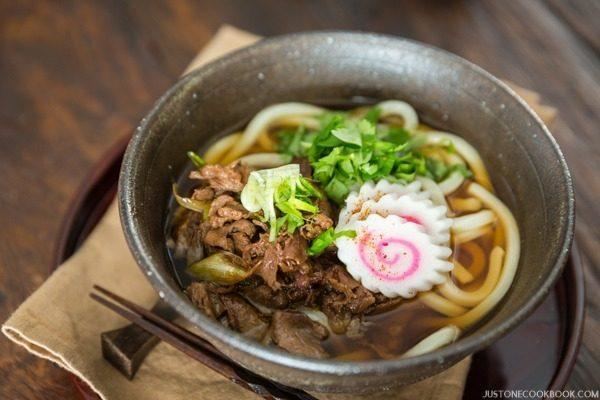 | ||
Similar Soba, Ramen, Noodle, Tempura, Donburi | ||
Udon noodle eating spree tempura binge only in japan
Udon (饂飩, usually written as うどん) is a type of thick wheat flour noodle of Japanese cuisine. Udon is often served hot as a noodle soup in its simplest form, as kake udon, in a mildly flavoured broth called kakejiru, which is made of dashi, soy sauce, and mirin. It is usually topped with thinly chopped scallions. Other common toppings include tempura, often prawn or kakiage (a type of mixed tempura fritter), or aburaage, a type of deep-fried tofu pockets seasoned with sugar, mirin, and soy sauce. A thin slice of kamaboko, a halfmoon-shaped fish cake, is often added. Shichimi can be added to taste.
Contents
- Udon noodle eating spree tempura binge only in japan
- Japanese food udon noodles
- Origin
- Dishes
- Hot
- Cold
- Japan
- Korea
- Palau
- References

The flavor of broth and topping vary from region to region. Usually, dark brown broth, made from dark soy sauce (koikuchi shōyu), is used in eastern Japan, and light brown broth, made from light soy sauce (usukuchi shōyu), is used in western Japan. This is even noticeable in packaged instant noodles, which are often sold in two different versions for east and west.

Japanese food udon noodles
Origin
There are many stories explaining the origin of udon.
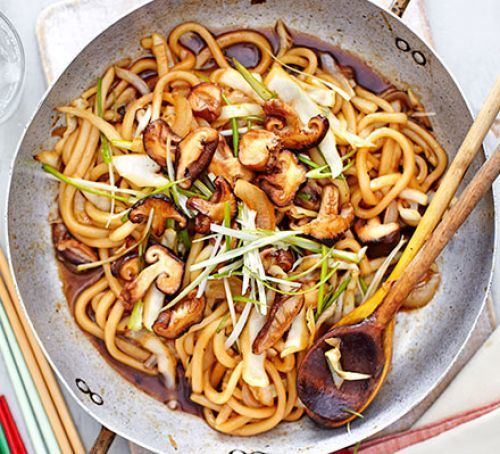
One story says that in AD 1241, Enni, a Rinzai monk, introduced flour milling technology from Song to Japan. Floured crops were then made into noodles such as udon, soba, and pancakes which were eaten by locals. Milling techniques were spread around the country. In the Edo period, the thicker wheat noodle was generally called udon, and served with a hot broth called nurumugi (温麦). The chilled variety was called hiyamugi (冷麦).
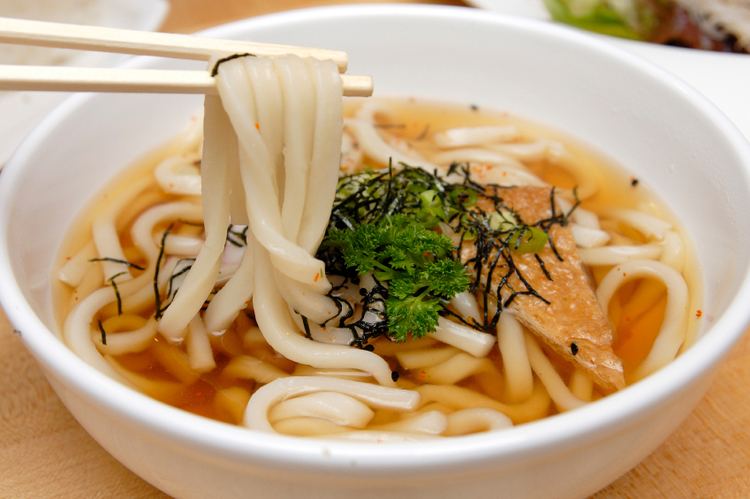
Another story states that during the Nara period, a Japanese envoy was introduced to 14 kinds of confection while being in China during the Tang Dynasty. One of them was called sakubei (索餅), which was listed as muginawa (牟義縄) in Shinsen Jikyō (新撰字鏡), a dictionary which was published in the Heian Era. The muginawa is believed to be an origin for many kinds of Japanese noodles. However, the muginawa in Shinsen Jikyō was made with wheat and rice flour.
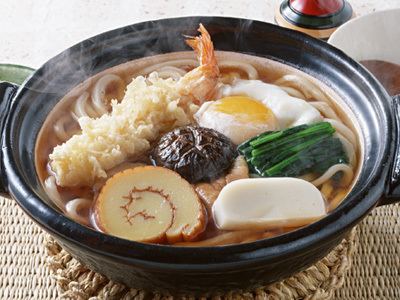
Another story for udon claims that the original name of the noodle was konton, which was made with wheat flour and sweet fillings.
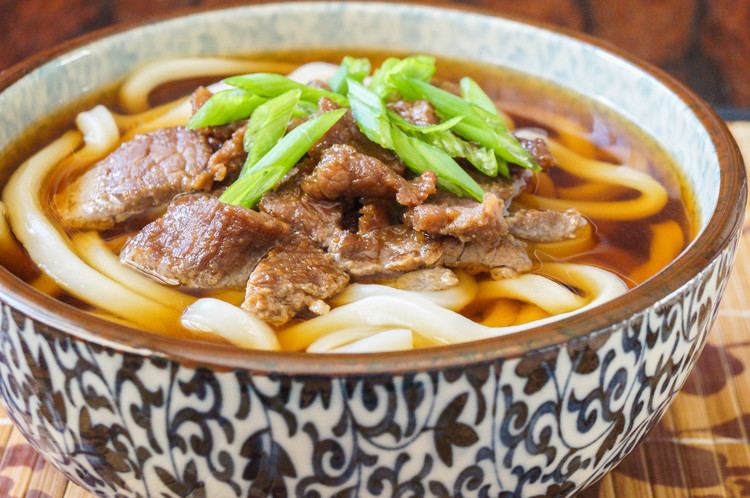
Yet another story says that a Buddhist priest called Kukai introduced udon noodles to Shikoku during the Heian Era. Kūkai, the Buddhist priest, traveled to Tang China around the beginning of the 9th century to study. Sanuki Province claimed to have been the first to adopt udon noodles from Kūkai. Hakata claimed to have produced udon noodles based on Enni's recipe.
Dishes
Like many Japanese noodles, udon noodles are usually served chilled in the summer and hot in the winter.
Cold udon, or udon salad, is usually mixed with egg omelette slices, shredded chicken and other fresh vegetables, such as cucumber and radish. Toppings of Udon soup are chosen to reflect the seasons. Most toppings are added without much cooking, although there are also deep-fried tempura. Many of these dishes may also be prepared with soba.
Hot
Cold
Japan
There are wide variations in both thickness and shape for udon noodles.
Korea
In Korea, authentic Japanese udon dishes are served in numerous Japanese restaurants, while the Korean-style udon noodle soups are served in bunsikjip (snack bars) and pojangmacha (street stalls). Both types are called udong (우동), which is the transliteration of the Japanese word udon (うどん). In Korea, the word udong refers to noodle dishes (typically noodle soup), while the noodles themselves are called udong-myeon (우동면; "udong noodles") and considered a type of garak-guksu (가락국수; "thick noodles"). Common ingredients for udong noodle soup include crowndaisy greens and eomuk (fish cakes), both of which are not very common in Japanese udon dishes.
Palau
There is also a dish called udon in Palau, because of the former Japanese administration. The broth is soy sauce–based like Japanese udon. However, as there were many immigrants from Okinawa, it uses less broth like Okinawa soba. Most notably, the noodle is that of spaghetti, as it is easier to acquire there.
